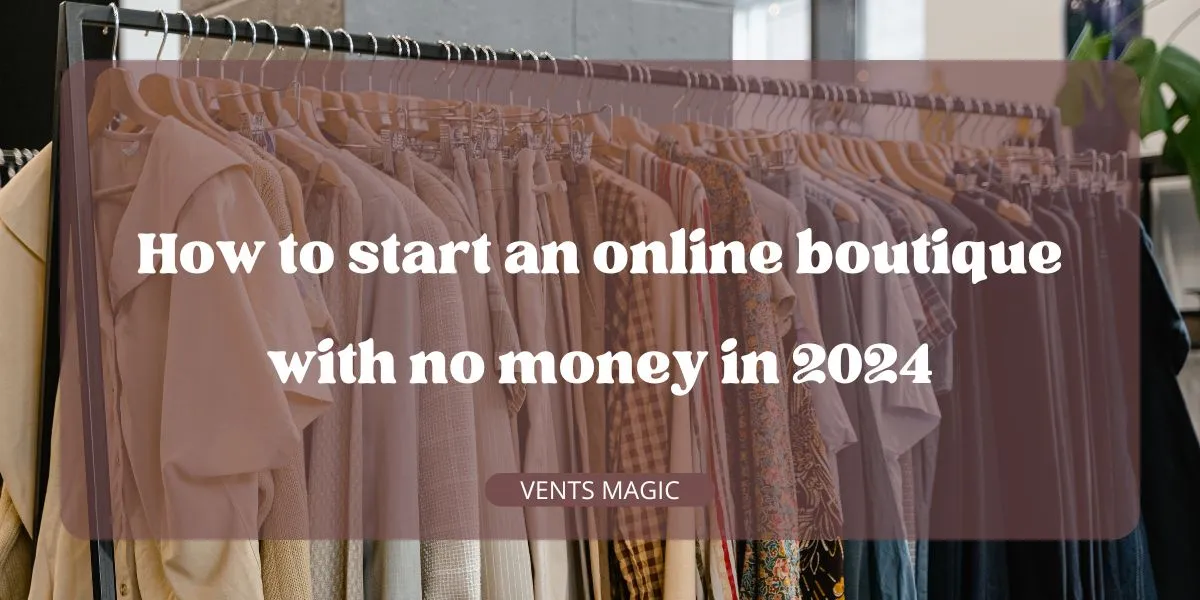How to start an online boutique with no money in 2024
How to start an online boutique with no money in 2024 Are you looking for the question How to start […]
How to start an online boutique with no money in 2024 Read More »
Starting an online boutique can be a thrilling and rewarding journey, but it’s also one that requires careful planning and decision-making. Whether you’re new to the world of e-commerce or have some experience, the choices you make in the early stages will greatly impact the success of your business. This guide will walk you through three crucial things to consider before starting an online boutique. These factors are vital for building a sustainable business that not only thrives but also meets the needs of your customers.
Also Read: and why is it important for revenue growth
The first and most important step in starting an online boutique is to identify your niche and target audience. Before you even think about the clothes, accessories, or products you want to sell, you need to know who you’re selling to. This process involves some in-depth market research, which is essential to ensure you’re not entering an oversaturated market with too much competition or a market with no demand.
In today’s highly competitive online retail space, trying to sell everything to everyone is a surefire way to fail. A well-defined niche allows you to cater to a specific group of people, making it easier to market your products, build a brand identity, and stand out from competitors.
For instance, instead of creating a general clothing boutique, you could focus on sustainable fashion for women, athleisure wear for men, or chic maternity clothes. By focusing on a niche, you’ll be able to build a loyal customer base that resonates with your brand.
To find your target audience, start by asking yourself some key questions:
According to a survey by Statista, global e-commerce sales are expected to reach $6.5 trillion by 2023. With such immense growth in online shopping, understanding your audience will help you tap into this opportunity effectively.
Once you’ve identified your niche, the next step is to figure out how and where you’ll source your products. Your boutique’s success largely depends on the quality of your inventory, your ability to manage it, and how well you can maintain relationships with your suppliers. This is where many budding boutique owners hit their first roadblock. Let’s break it down.
When sourcing products for your boutique, there are three main avenues to explore:
Efficient inventory management is critical to avoid overstocking, stockouts, and managing cash flow. Using inventory management software can help automate processes, track stock levels, and forecast demand. Tools like Shopify, Ordoro, or Veeqo can streamline this process.
For small boutiques, it’s better to start with a small amount of inventory and test the waters before making larger investments. A common mistake is over-ordering and tying up too much capital in stock that doesn’t sell.
Your website is the face of your online boutique. It’s where customers will browse, make purchases, and form their first impression of your brand. That’s why building a user-friendly, aesthetically pleasing, and functional website is vital. Alongside this, a strong marketing strategy will help drive traffic to your boutique and convert visitors into loyal customers.
Creating an online boutique is only half the battle. Getting people to visit your site and purchase products is where marketing comes into play. Here are some key marketing strategies:
The cost to start an online boutique can vary widely depending on factors like inventory, website development, and marketing. On average, it can range from $500 to $10,000. If you’re opting for a dropshipping model, the cost can be significantly lower since you won’t need to buy inventory upfront.
Shopify, WooCommerce, and BigCommerce are among the most popular platforms for starting an online boutique. Shopify is user-friendly, especially for beginners, and offers a range of customizable templates. WooCommerce is a great option if you already have a WordPress website, while BigCommerce is ideal for those looking for more advanced features.
It typically takes 2-6 months to get an online boutique up and running, depending on how quickly you can source products, build your website, and develop your marketing strategy. Dropshipping models might take less time, while manufacturing your own products can take longer.
In most cases, yes. Even if you’re running your boutique from home, you will likely need a business license to operate legally. The requirements will vary depending on your location, so it’s best to check with your local government for specific regulations.
Driving traffic to your online boutique involves a mix of SEO, social media marketing, email campaigns, and influencer partnerships. Focus on creating high-quality, engaging content and building a strong presence on platforms where your target audience spends time. Paid advertising (such as Google Ads or Facebook Ads) can also help in driving traffic.
Starting an online boutique is an exciting venture filled with opportunity, but it requires careful planning and attention to detail. By focusing on identifying your niche and target audience, managing your inventory wisely, and building a strong website and marketing strategy, you’ll set yourself up for long-term success.
How to start an online boutique with no money in 2024 Are you looking for the question How to start […]
How to start an online boutique with no money in 2024 Read More »
